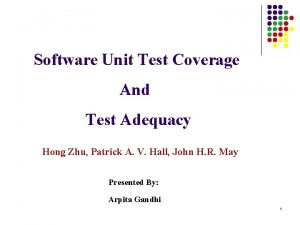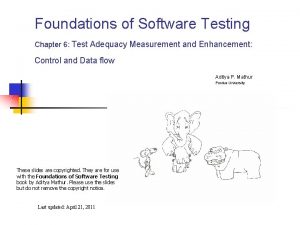Out of Region Market Assumptions Resource Adequacy Technical












- Slides: 12

Out of Region Market Assumptions Resource Adequacy Technical Committee April 2010 1

California Import Capability • Focus analysis on California Imports • Currently, the assumption in Genesys for the adequacy assessment is 3, 000 MW of hourly import capability from October through May and 0 MW from June to September • Note that this is not the dispatch in Genesys – just the capability • Examine this assumption by looking at: – Power plant development in California between 2000 and 2010 (total in state regardless of owner) – CPUC Resource Adequacy Assessment (March 2009) (owned or under contract by IOUs or community aggregators) – Intertie Loadings between 2004 and 2009 2

Power Plant Development in California • During the past 11 years there as been substantial resource development within the state of California – most of it gas-fired • Chart (page 4) include all resources built in state regardless of owner • Since not all developers are load serving entities or all generation is dedicated to load – no load/resource assessment can be made • Chart (page 5) “net addition” include the impact of plant retirements in the state (but also including Mohave) 3

MW Natural Gas Wind 21561 1303 Geothermal 211 Biogases 204 Hydro 275 PV 146 Biomass 87 Misc. 21 Source: Ventyx 4

Net Additions = cumulative additions – cumulative retirements 5

CPUC RA Assessment • • The CAL-ISO has not published a winter assessment since October 2003 The March 2009 CPUC study does not include municipal utilities and irrigation districts – so study does not represent the entire state of California Analysis includes all IOUs and Community Choice Aggregators Tables include monthly results – First table includes the results including the demand response programs – Second table removes demand response programs – assume that California would cut exports (short term sales) before calling on demand response programs • • • Results include unit-contingent and non-unit contingent import contracts, DWR contracts, physical resources, and RMR capacity Only net qualifying capacity is considered based on historical performance and other factors – designed to get the expected value of capacity Results – excluding demand response programs – California has winter surplus capability, tight margins in the summer, and modest surpluses in the shoulder months (page 7 Column G) 6

CPUC RA Assessment 7

CPUC RA Assessment 8

The Interties • The average physical transfer capability* on the A. C. line S. to N. is 3, 100 MW [Genesys 4880] • The average physical transfer capability* on the D. C. line S. to N. is 1, 700 MW [Genesys 2850] • Flows on the A. C. line were S. to N. 3. 8% of the time with an average flow of 346 MW and a maximum of 1, 513 MW • Flows on the D. C. line were S. to N. 18. 9% of the time with an average flow of 472 MW and a maximum of 2, 045 MW • The maximum coincidental import on both lines was 2, 810 MW *A. C. rated at 4, 800 MW; average includes line de-rates (Dec 2004 to Dec 2009) 9

Limiting Factors • Interties provide enough physical import capability ~ 4, 800 MW – up to 2, 810 MW have been imported coincidentally over both lines • Over 17, 000 MW of net generation has been built within the state over the past 11 years, but not necessarily under contract with load serving entities • California IOU/community aggregators are the limiting factor – no meaningful surplus capacity during July to October (pg 8 – column G) and less than 3, 000 MW during shoulder months 10

Recommendation • Assuming that California would cut exports before initiating demand response programs: – Genesys assumption of 0 import capability during July to August is justified as well has 3, 000 MW during December to February – However, shoulder months should be revised to reflect 0 import capability in October, and amounts of less than 3, 000 MW in March to June and November 11

Appendix – Intertie Loading 12
 One thing by one direction
One thing by one direction Leader challenger
Leader challenger Define market segmentation targeting and positioning
Define market segmentation targeting and positioning Market basket analysis assumptions
Market basket analysis assumptions The number of test of adequacy is
The number of test of adequacy is Briefly explain test adequacy criteria with proper example
Briefly explain test adequacy criteria with proper example 5 criteria of adequacy
5 criteria of adequacy Horizontal and vertical adequacy
Horizontal and vertical adequacy Capital adequacy ratio formula
Capital adequacy ratio formula Certificate of adequacy
Certificate of adequacy Representational adequacy
Representational adequacy Adequacy
Adequacy Adequacy
Adequacy























